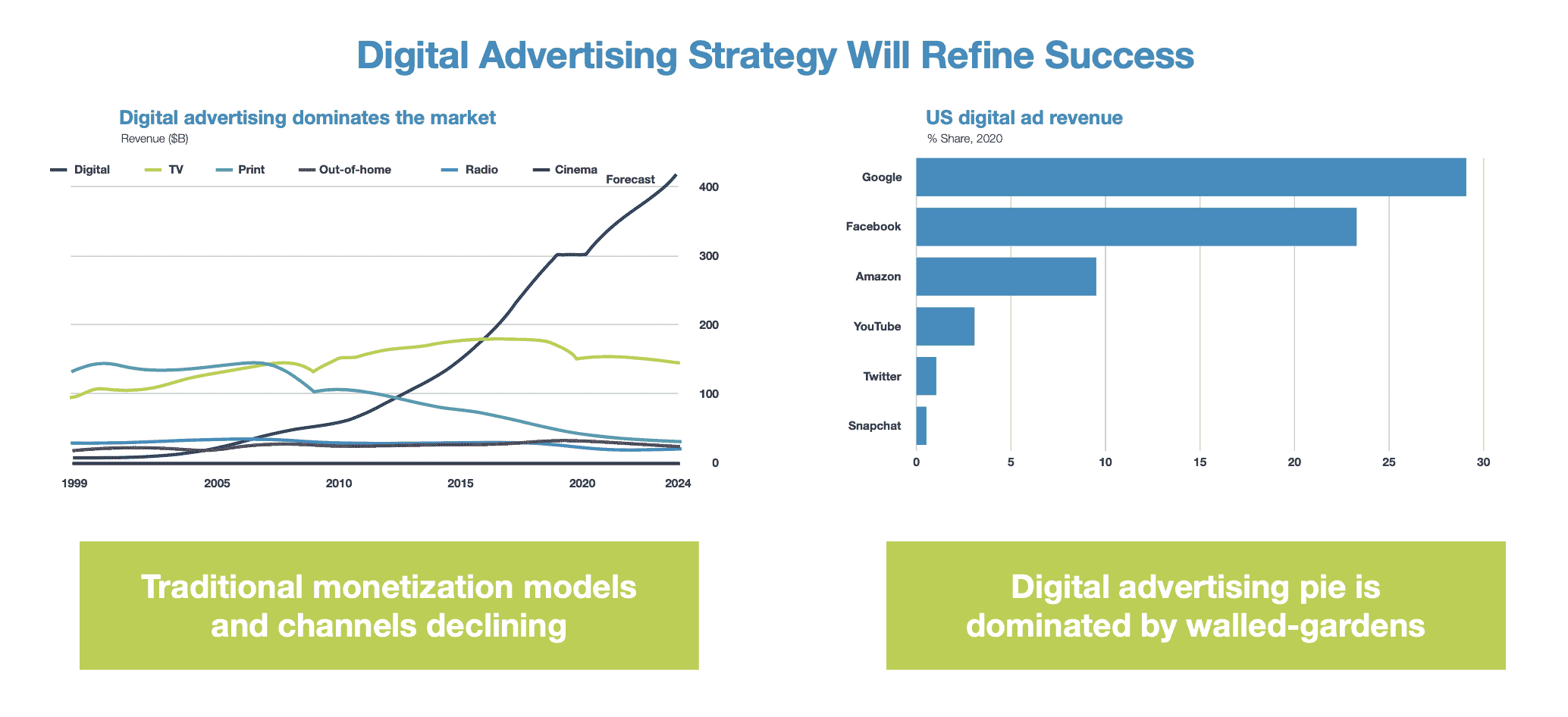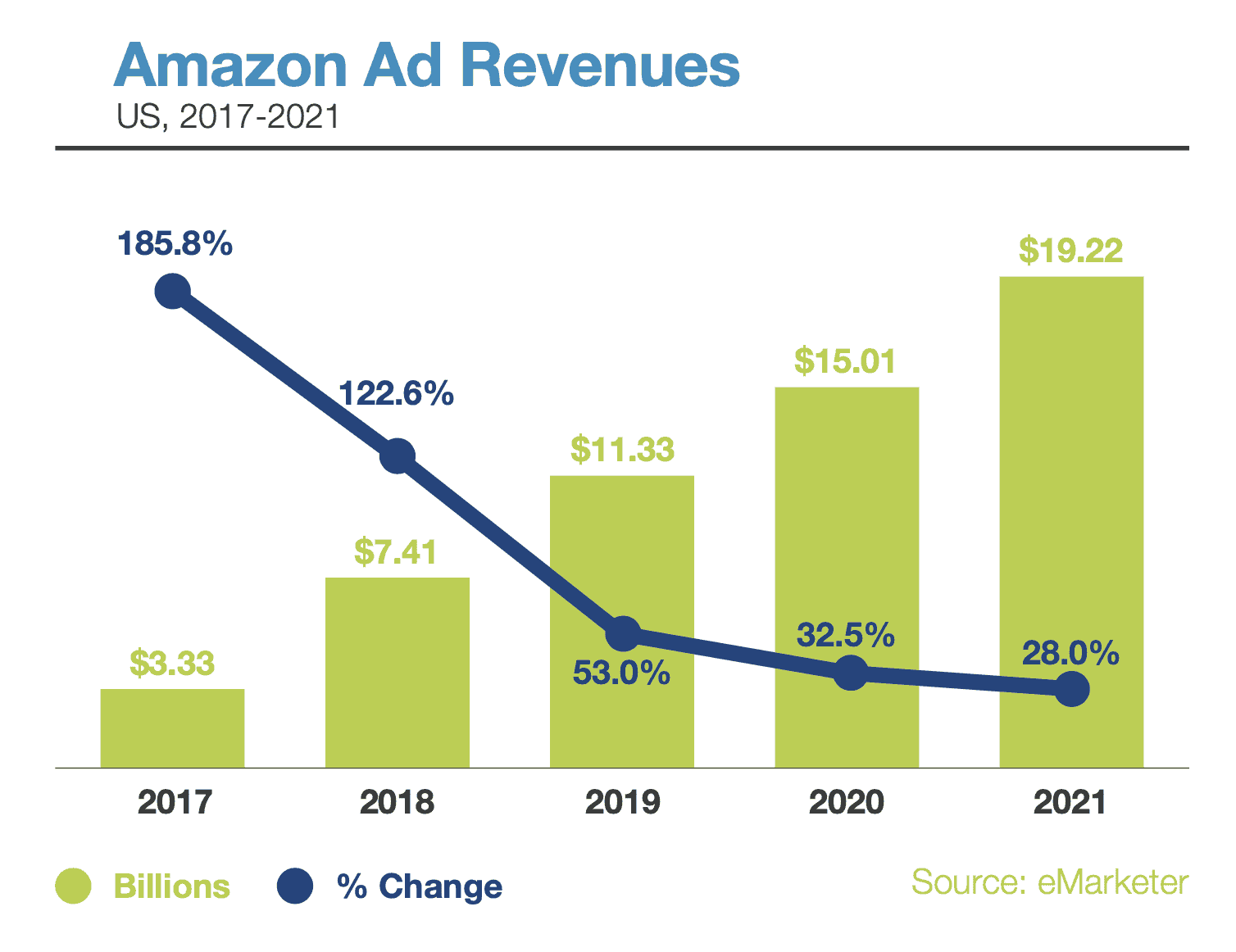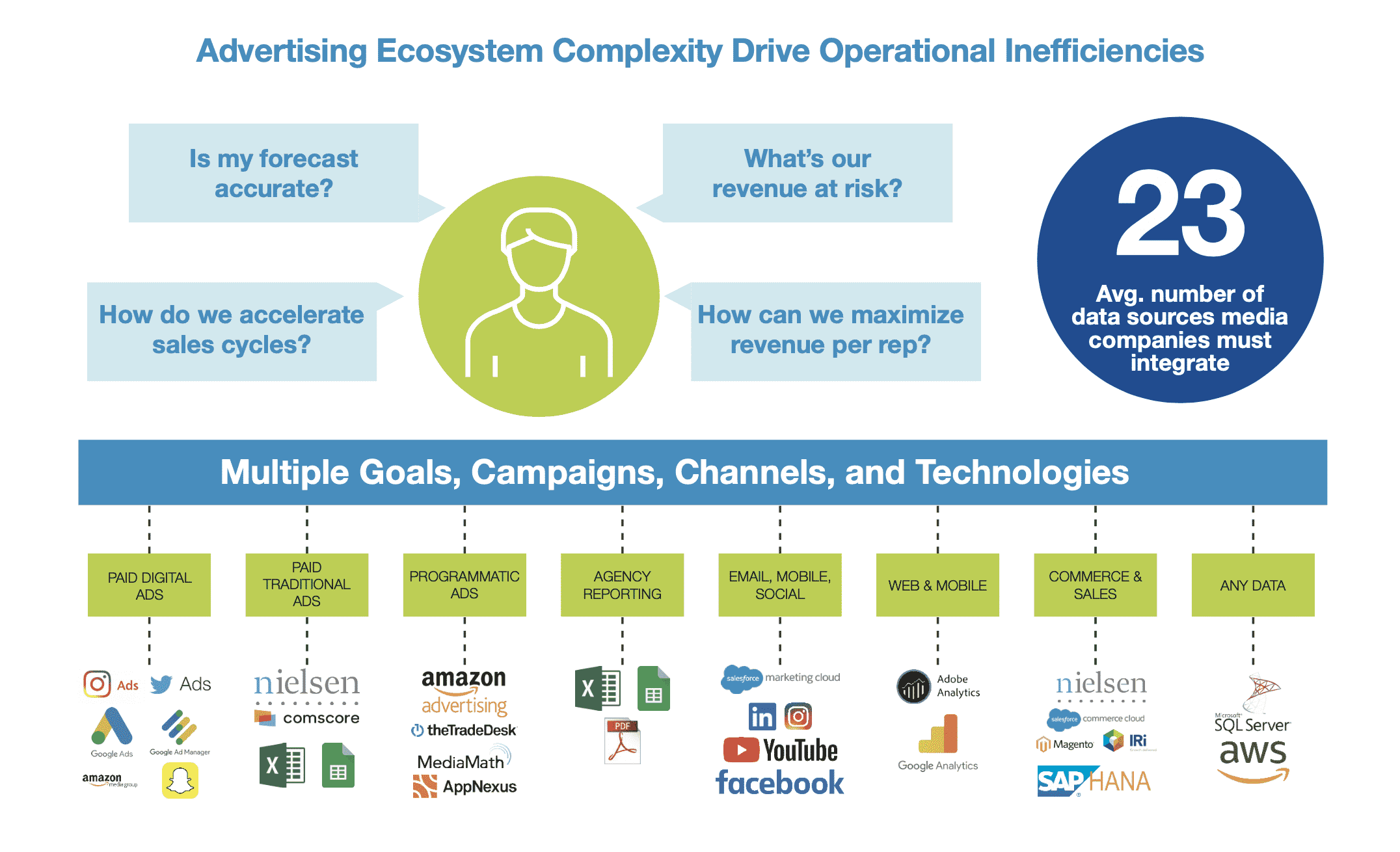The media industry is at an inflection point.
After years of transformation, it’s time for the next big thing.
Digital advertising dominates the market, projected to increase to over $400bn in revenue by 2024. Compare that with traditional channels like TV (dropping to $150bn), print (dropping to $50bn), or cinema (effectively $0), according to Magna.
Drill down further into digital advertising and it’s one frustrating walled-garden after another. Google, Facebook, and Amazon make up the majority of all digital advertising revenues in 2020, with Google taking the top spot at 30% market share, according to eMarketer.
As the industry moves completely digital-first, businesses need to evolve their IT capabilities. Here are the top four challenges facing businesses today as they look to the future of media:
1. Changing audiences
Fueling the rise of digital is changing consumer preferences. Advertisers need to go where their audiences is, and increasingly, that looks more fragmented and digital driven:
- Digital media services and direct-to-consumer platforms like Netflix, Amazon Prime, Hulu, and Disney+ are now the top choice of the connected consumer for television
- Audiences expect hyper-personalization for media experiences, which can only be achieved with data and a 360-degree-view of the customer
- Entertainment landscape continues to go digital, with a rise in virtual experiences and augmented reality at movie theaters, theme parks, concerts, and sporting events
Today’s buyers aren’t clicking purchase from channels you’d expect.
Depending on your target audience, you need to optimize for digital channels like Twitch, Instagram, and through influencer marketing rather than what’s determined on CBS or featured in the New York Times.
As advertisers, how can we be more creative in the way we approach and engage our audience? That comes from understanding exactly how target audiences approach their purchase path, what channels influence them the most, and what kind of advertising best suits their needs — rather than the needs of the advertiser.
2. The rise of new media
But digital is only at the beginning of its media journey. The next generation of media buying hasn’t yet begun — we’re already seeing new media types that never existed before, especially through the $25bn retail and ecommerce media market like Amazon, Target, and Walmart.
This is exactly the kind of third-party market information and integration that Salesforce Media Cloud will support. Ensure your platforms are scalable and can meet the demands of new and emerging markets. With Salesforce, you can adapt your programmatic advertising to new sales techniques and new products. No matter what types of new media emerge in the next few years, investing in Salesforce technology will give you the flexibility to take advantage of those new media types your buyers demand and sell them in a converged way.
3. Bringing old media and new media together
Advertisers no longer want to settle for one thing. Before, they may have doubled down on a particular channel, like print, television, or linear. But today, they’re looking to do it all — leaving you to figure out how to juggle multiple legacy systems, from dinosaur print media to advanced programmatic technology online.
These systems don’t talk to one another. It would be like trying to ask an old-fashioned rotary phone to access the internet. It’s just not possible.
It’s up to agencies and advertisers to bring old and new media together for clients so you can deliver the best of both. Work closely with media planning teams to develop campaigns that ensure they meet the needs of customers, and evaluate your incentives and sales enablement so your sales team can follow through with every media type.
In the new, converged world, you need one system that can sell all media types — future-proofing your business for an industry that will only keep changing. Maximize inventory yield across every channel, whether that’s print, digital, out-of-home, linear, or something completely new.
4. Managing data and operations in one place
The trick to power personalized, programmatic advertising? The right data.
All of these challenges add up to an advertising ecosystem full of operational inefficiencies, one that’s frustrating to maintain and impossible to update. With multiple goals, campaigns, channels, and technologies, it can be difficult to get the bigger picture and answer questions like:
- Is my forecast accurate?
- What’s our revenue at risk?
- How do we accelerate sales cycles?
- How can we maximize revenue per rep?
Add that to multiple regions, business units, media products, and navigating third-party channels that can change your ROI on a whim (looking at you, Google), success can feel out of reach, especially for companies with complicated legacy systems.
Navigate the new media ecosystem with Silverline Media and Entertainment
That’s why Silverline Media and Entertainment is here to help. As a Salesforce consulting partner with more than 10 years of experience implementing, configuring, and re-envisioning the world’s #1 sales and service platform, we focus on Media and Agencies and obsess about our customer success. We also offer a range of solutions from Strategic Advisory, Implementations and Managed Services designed to provide the right partnership our customers need. See how we can help your media business.







